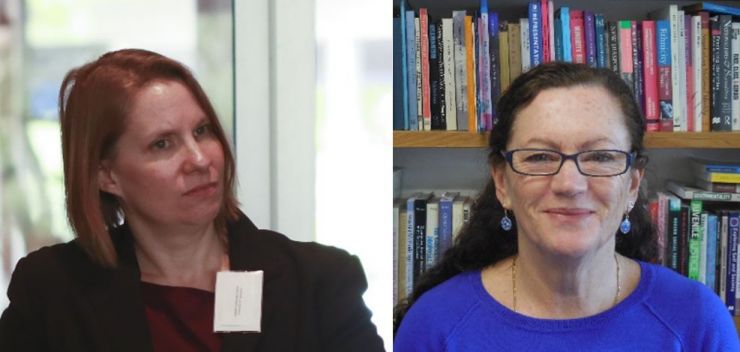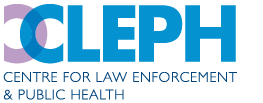
Do you know what a police officer does?
(This content was published by Change Matters Tasmania. Please read the original article here)
Chances are that the very first images to cross your mind when you ponder this question are those of SWAT teams, investigators, patrols, drug busts, handcuffs, and the like. However linked to popular culture these images are (the by-product of CSI-inspired TV programs), they are a far cry from the typical on-the-job activities of a police officer in Tasmania, and throughout Australia.
Did you know that 75% of police interactions with the public are with vulnerable people? From youths to Aboriginal and Torres Strait Islanders, from people living with a mental illness to people with addictive behaviours, from repeat drink drivers to people suffering a brain injury, people with a form of vulnerability, as defined in legislation and policy, are the core business of police officers. Some of these encounters are volatile and can generate the kind of imagery that provides the ‘bread and butter’ of the film and TV industry. However, most of these encounters are not violent, and consist of activities such as welfare checks, agency referrals, bail monitoring, assistance to emergency personnel, etc.
In a nutshell, the reality of police work is more about negotiating the complexities of duty of care than the ongoing navigation of everyday public life as a battle field. This raises a number of questions: How do we reconcile what we THINK police work is about, with what police work REALLY is? How do we reconcile police work with activities that would appear to be non-police related? And if police are, as part of their duties, doing ‘non-police work’, how do we train them to do it properly?
Contemporary police organisations in countries such as Australia, Canada and the United Kingdom are now placing a significant emphasis on police officers as collaborators, communicators and problem-solvers, rather than crime fighters. In a growing acknowledgement that police do much more than respond to crime, their work is increasingly seen as situated along a broad continuum of actions that span accompanying young people on the street or absconding from school back to a place of safety, to the recovery of a dead body after a fatal overdose. We expect police officers to de-escalate potentially violent situations and bring individuals in crisis to medical personnel for evaluation and follow-up treatment.
None of this is about responding to crime. None of this has to do with law enforcement. Frankly, none of this is direct police business if we understand this from a minimalist perspective; that is, the view that the core business of police is narrowly focused on law enforcement and crime fighting. On the other hand, the maximalist perspective, now gaining traction, forces us to start considering police officers as public peacekeepers, problem-solvers, and public health interventionists.
There is undoubtedly a discussion to be had about why police perform such tasks instead of other professionals, who have arguably a better understanding of de-escalation techniques and of the brain chemistry during a mental health crisis. Yet, the police officer always shows up first at the scene.
Perhaps we need to stop thinking of these professionals as estranged workers in siloed industries. In reality, they all work together. Cross-agency collaboration is one of the biggest untold success stories of the past decades when addressing issues of national security, public safety and public health. However, we still have much further to go before we can pat ourselves on the back.
Today, police are commonly referred to as ‘brokers of services’. Available 24/7 all year round, they have the capacity to identify, initially address and refer problems to other agencies. At a strategic level, the police participate in a large number of formal inter-agency partnerships with other government and non-government organisations specialising in a discrete portfolio. Usually, these portfolios are linked to one of several vulnerabilities: homelessness, disability, addiction, literacy, mental health, refugee status, etc. These institutional arrangements unavoidably trickle down to the constable who patrols the streets as she attempts to address the symptoms of a social ‘mal-être’ that can be connected to any one or more of these vulnerabilities. This is where referrals to drug and alcohol education come from, as well as referrals to mental health evaluations, courts, counselling, school authorities, and road safety authorities, to name only a few. If the police action does not directly involve an actual referral, some of these organisations will appear at some point, as a ‘Cc’ at the bottom of administrative paperwork.
Police training is now different from what it was 20 or 30 years ago. Of course, there remains an essential commitment to the law enforcement aspect of the portfolio (because otherwise, who else would do it?). However, a greater emphasis is placed on the need for a more sophisticated and nuanced understanding of the relationship between vulnerability and crime (because otherwise, who else could better picture it?), and of course, on acknowledging the various actors that need to play their part in the problem-solving process (because otherwise, who else will drive inter-agency outcomes?).
Collaboration, communication and leadership (including reflective practice), then, lie at the heart of training ‘good cops’ today. Acknowledging the critical role of police in public safety and public health is paramount. It is well documented that some agencies only become aware of the needs of their (soon-to-be) clients because police become involved and raise a red flag. This is one of the most tell-tale signs that police are not only specialists in addressing crime but are involved in all aspects of the public health continuum. This requires new ways of thinking about police work.
A week before disseminating this opinion piece, one of us was co-teaching recruits with a serving police officer. Upon answering a question about referrals of cautioned young people to external agencies, the police officer matter-of-factly responded:
“Yes. You must know all this. We are Jacks-of-all-trades. You might as well get used to it”.
Maybe we should give this some serious thought.
Dr Isabelle Bartkowiak-Théron is a Senior Researcher in the Tasmanian Institute of Law Enforcement Studies (TILES) at the University of Tasmania.
Professor Roberta Julian is Foundation Director of the Tasmanian Institute of Law Enforcement Studies (TILES) at the University of Tasmania.
